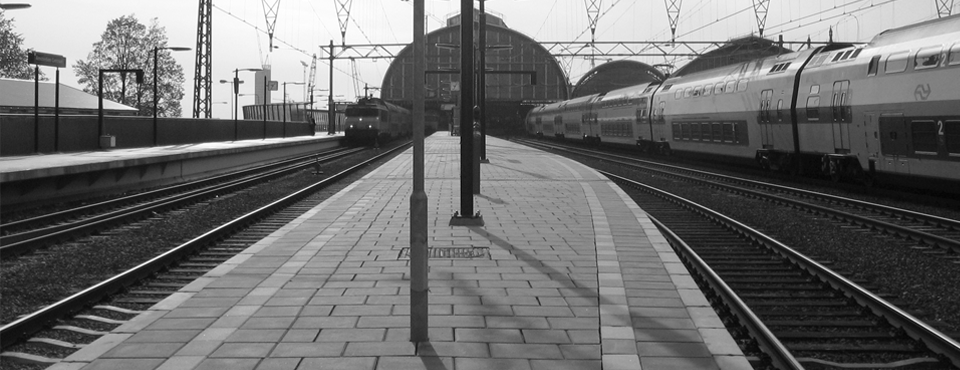
The gains of trains

Congestion problems on the road and environmental constraints are causing a renewed interest for public transport. In the Netherlands, about a month ago, a major rail extension between Lelystad and Zwolle was opened. Further, in the last decade several new railway stations have been opened in the Netherlands (for example Halfweg-Zwanenburg, Sassenheim, see Figure). As is well known, railway improvements are extremely costly for society. It is therefore important to know if the society benefits from railway improvements, and more specifically, benefits from the opening of new stations.
Economists have argued that important benefits of new station openings should be reflected in house prices. For example, if households have lower (time) costs to go to work, they have more money to spend on their house. Houses near stations should therefore be more expensive near locations that are well accessible, all else equal.
Together with Jos van Ommeren (VU) and Piet Rietveld (VU), I have investigated the impacts of railway proximity on house prices in Dutch cities. We focus on the effects of new stations built on existing railroad tracks between 1995 and 2007. The new stations are often located in the suburbs of cities, but sometimes also are new stations not close to any other station. The new stations have comparable railway service levels and provide stops for local commuter trains only. Our analysis is based upon a house transactions dataset from the NVM.
Previous studies that have investigated the economic benefits of improved railway accessibility often do not control for locational characteristics that are fixed over time. These studies may sometimes find huge effects of ‘railway accessibility’. This may be due to the fact that stations are often located near shopping centres and are located in the city centre, which may imply higher house prices (for example think of Utrecht CS). To avoid this pitfall, we then compare the price of the same house before and after a station opening, so we control for all time-invariant locational characteristics. It is then surprising that we find almost no effect of station openings on house prices.
There may be several reasons for the absence of an economic effect of station openings. First, most new stations are relatively small and are located close to larger stations. These new stations may therefore have limited effects on travel time of passengers. Second, station openings may also imply negative externalities that offset positive accessibility effects. For example, a station opening may imply increases in noise and the unsightliness of the station, especially if it includes a parking lot. Third, for only about 2 percent of the trips, people use the train. This low number implies that railway accessibility is of limited importance for a large share of the Dutch population, which may explain why improvements in railway accessibility do not command higher house prices.
This is not to say that there are not any benefits of existing stations. Large stations, such as Utrecht CS, Amsterdam CS and Rotterdam CS, are likely to increase house prices (and commercial property values) in their immediate surroundings, but it is very difficult to disentangle these benefits from the benefits of living in the city centre with access to loads of urban amenities.
Click here for the working paper.
